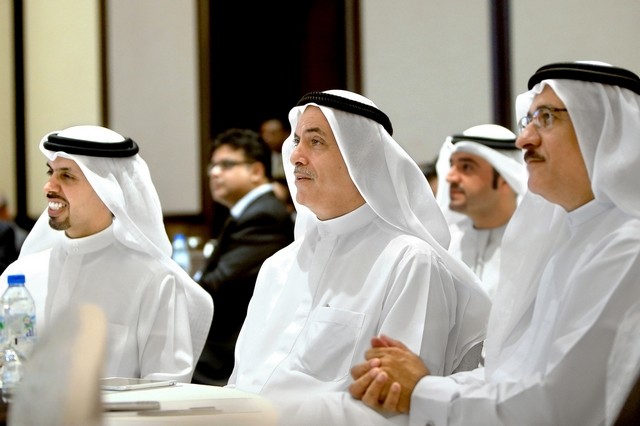
Dubai urban planners have completed a blueprint for the city to house 9.5 million people – more than four times its current population.
Dubai Municipality has completed a citywide urban design plan which sets out future density and population levels across the emirate, according to the organisation’s assistant director general Abdullah Rafia.
He told Dubai Chamber’s CEO conference yesterday that countries across the world need to contend with rapid population growth, especially in cities, as 70 per cent growth in the world’s urban population is expected by 2030.
“Fortunately, here in Dubai, all of the population is urban,” he said. “Our urban design needs to be sustainable – to have a design that limits sprawl but considers the impact [of population growth].
“We have already designed the urban design for the whole of Dubai. The urban area of Dubai will consist of one-third of the area of the emirate of Dubai and its maximum capacity will hold over 9.5 million people,” he said.
He added that there is no time frame for its blueprint for the city to be reached, but said that with the urban design plan in place, “our future can be properly implemented”.
Mr Rafia also said that the municipality is moving ahead with its plans for Desert Rose – a new, sustainable city planned to be built in Dubai that will house up to 160,000 people.
“This is at the early stage,” he said. “We’ve contracted the infrastructure designers, so they are engaged. We already have the concept design finished, so a lot of things are finished. It is something that can be built real fast,” he said.
Speaking about the high degree of sustainability it plans to incorporate into the design, he said: “Our designers told me we are very close to [achieving] zero emissions”.
Also speaking at the conference, Saeed Al Abbar, chairman of the Emirates Green Building Council, explained that sustainability standards were improving to such an extent that the most sustainable homes can now generate more energy than they consume.
“We’re going to move away from this ‘less damage’ approach to buildings with an actual positive benefit. We’re also going to see a greater focus on retrofits of existing buildings,” he said.
“This is something that has really picked up in the past four or five years in Dubai. There’s 120,0000 buildings in Dubai. If we only focus on new builds, we miss 90 per cent of the puzzle.”
Essa Al Ghurair, chairman of Al Ghurair Resources, urged Dubai Electricity and Water Authority (Dewa) to move ahead with legislative amendments to allow customers to sell electricity they generate by solar power back to the grid.
“Or at least swap, so I can give 100MW at one time and then they can give it me back.
“It’s a win-win from both sides. The government does not have to put a lot of money to generating the electricity, and at the same time the company is saving some money.” He said that the price of solar equipment had dropped considerably in recent years – so much so that subsidies were no longer required.
 Comments ( 0 )
Comments ( 0 )
 Post a Comment
Post a Comment